Ultimate Red Sangria Recipes: Perfect Blends for Any Occasion
19th Jul 2024
Seeking the ultimate red sangria recipe? Look no further. Our red sangria recipes take you through combining flavorful red wine with the right fruits and a splash of spirits, ready to impress at your next gathering. Simple steps, no fuss - just the essence of a festive, fruity pitcher of sangria.
Key Takeaways
- Classic red sangria is a balanced blend of red wine, seasonal fruits, a sweetener, brandy, and a fizzy element, perfect for both festive occasions and casual gatherings.
- The sangria’s flavor is best when allowed to chill and meld in the refrigerator, ideally overnight, and can be customized with various sweeteners, fruits, and your choice of fizz from club soda to flavored sodas.
- Serving sangria is an art – from the right glassware to presentation, and it pairs well with foods ranging from bold meats to a charcuterie board, or even desserts like chocolate and berries.
Crafting the Perfect Red Sangria Recipe
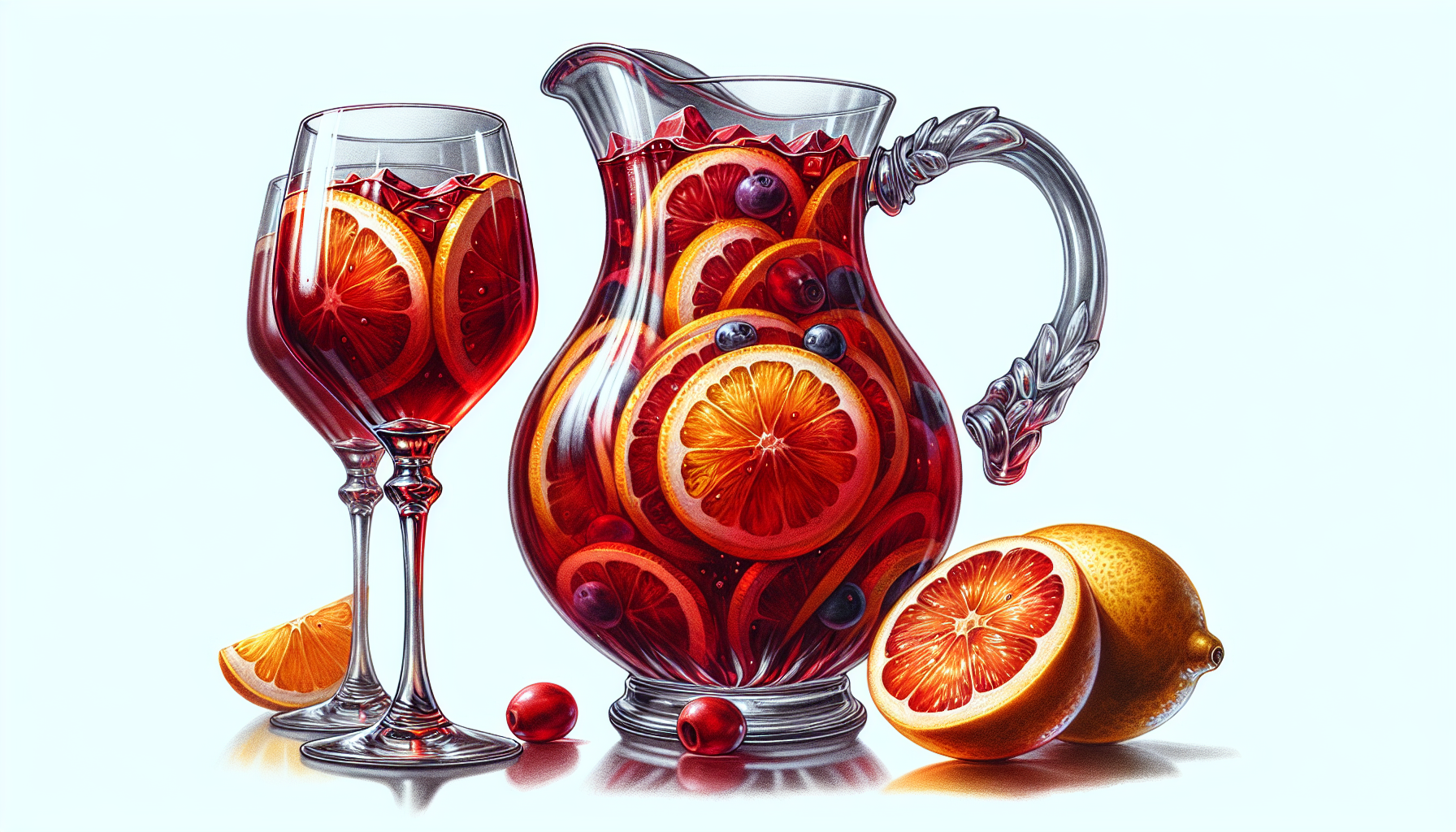
Sangria, perfected over centuries, transcends its status as a mere wine punch to an art form. At its core, a classic red sangria recipe is a symphony of:
- red wine
- ripe seasonal fruit
- a hint of sweetener
- a splash of brandy
- a bubbly twist
The magic lies in the balance of these elements, each contributing to the sangria’s reputation as a cool, fruity, and utterly refreshing beverage that’s as much a treat for the eyes as it is for the palate. It only takes about ten minutes of prep time to slice the fresh fruit and assemble the ingredients, but the result is a festive and fun concoction that’s ideal for serving a crowd and making any occasion feel special.
Red sangria’s delightful allure stems from its blend of red wine sangria ingredients, such as Spanish red wine and fresh fruit, yielding a taste that’s both authentic and adaptable. Regardless of the occasion, whether casual or grand, the simple process, accessible ingredients, and guaranteed enjoyment make authentic Spanish sangria a crowd-pleaser.
So, let’s embark on this flavorful journey by examining the foundations of an impeccable sangria recipe.
Choosing Your Base: Best Wine for Sangria
Unquestionably, wine forms the base of any sangria. But not just any wine will do; the best wine for sangria is one that is fruity, dry, and low in tannins. A Spanish Garnacha or Tempranillo brings the authentic touch of Spain to your glass, but other varieties like Rioja or Cabernet Sauvignon can also weave their own magic into the mix. The key is to choose an inexpensive wine that doesn’t skimp on flavor; after all, your sangria should be as generous in taste as it is in spirit.
When selecting your wine, think about the fruity notes that will complement the other sangria ingredients. The right wine not only provides the base for your concoction but also serves as a canvas for the other flavors to shine. Whether it’s the boldness of a Cabernet or the subtle spice of a Tempranillo, the wine you choose will set the stage for your ultimate red sangria recipe.
Sweetening the Deal: Adding the Right Sweeteners
Like a melody in a song, the sweetness in sangria ought to be harmonious, not overpowering. While sangria’s sweetness can be adjusted to taste, the choice of sweetener plays a pivotal role in defining the drink’s character. Simple syrup is the classic option, effortlessly blending with the other ingredients without altering the texture of the drink. It’s a straightforward mix of sugar (or honey) and water, brought to a simmer until the sugar dissolves.
For those with a penchant for the unconventional, why not try maple syrup? Its rich, caramel-like essence adds an unexpected twist to your sangria, offering a nod to autumnal flavors that can surprise and delight your palate. Whether you prefer the traditional route or are up for a little experimentation, the right sweetener can elevate your sangria from merely good to truly great.
The Fruit Medley: Selecting Fresh Fruit
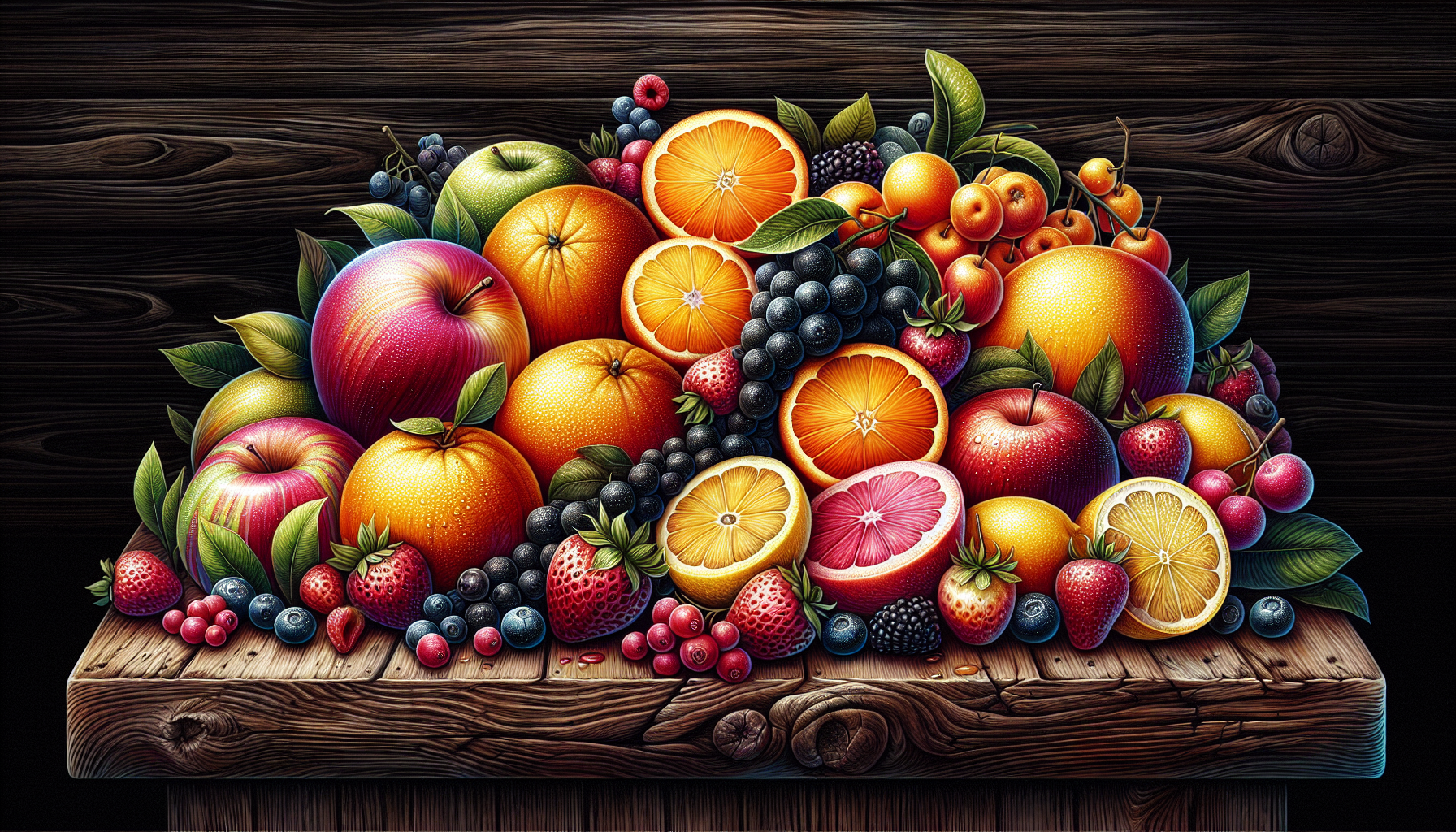
The vibrant heart of sangria lies in its fruit component, wherein a burst of color and flavor significantly influences the overall experience. It’s why choosing fresh fruit that is in season can significantly enhance the drink’s appeal, providing a taste that is both authentic and refreshing. Traditional red sangria often includes a mix of apples, oranges, and berries, each adding its own layer of complexity to the flavor profile. But remember, the key to a perfect fruit medley is balance—you want the wine’s characteristics to shine through, not to be overshadowed by an overabundance of fruit.
When assembling your fruit for sangria, think about the overall harmony of flavors. An orange might lend a citrusy zing, a green apple can contribute a tart crispness, and ripe strawberries can impart a hint of sweetness. The result? A concoction that’s absolutely delicious and inviting, with every sip promising a delightful taste adventure.
The Art of Mixing: Techniques for Making Sangria
After gathering your sangria ingredients, your next task is to blend them into a flavorful masterpiece. It starts with stirring together the red wine, a choice of brandy or orange liqueur, and orange juice to create the foundational sangria base. The order in which you mix these elements matters; first, the wine, followed by the orange juice and brandy, then the sweetener, and finally the fruit and a cinnamon stick to add a warming note. This methodical approach ensures each ingredient mingles perfectly, with a wooden spoon being the tool of choice for stirring the concoction and allowing the flavors to meld beautifully.
Undeniably, patience plays a key role when making sangria. For the flavors to truly combine and reach their peak, the mixture should be allowed to sit and chill in the refrigerator for a few hours, or even better, overnight. This waiting period is essential, as it lets the ingredients get to know each other, deepening the sangria’s taste and ensuring that your first sip is as memorable as your last.
To Chill or Not to Chill
Chilling does more than just being a step in the process—it’s a magical transformation phase. As the sangria sits in the cool embrace of your refrigerator, the flavors begin to develop, growing richer and more robust with each passing hour. While the sangria can be kept chilled for up to 3 to 4 days, the sweet spot for the most tantalizing taste is after about 8 hours, and ideally, it should be enjoyed within 48 hours to keep the fruit from becoming too soft.
For those who love to plan ahead, letting your sangria recipe refrigerate overnight can be a game-changer. This extended chill time doesn’t just blend the flavors; it marries them, ensuring that each glass of sangria is a testament to your dedication to the craft of cocktail making. And when served over ice cubes, the sangria stays refreshingly cool, perfect for sipping on a sunny afternoon or a balmy evening.
Fizz Factor: Soda and Sparkling Additions
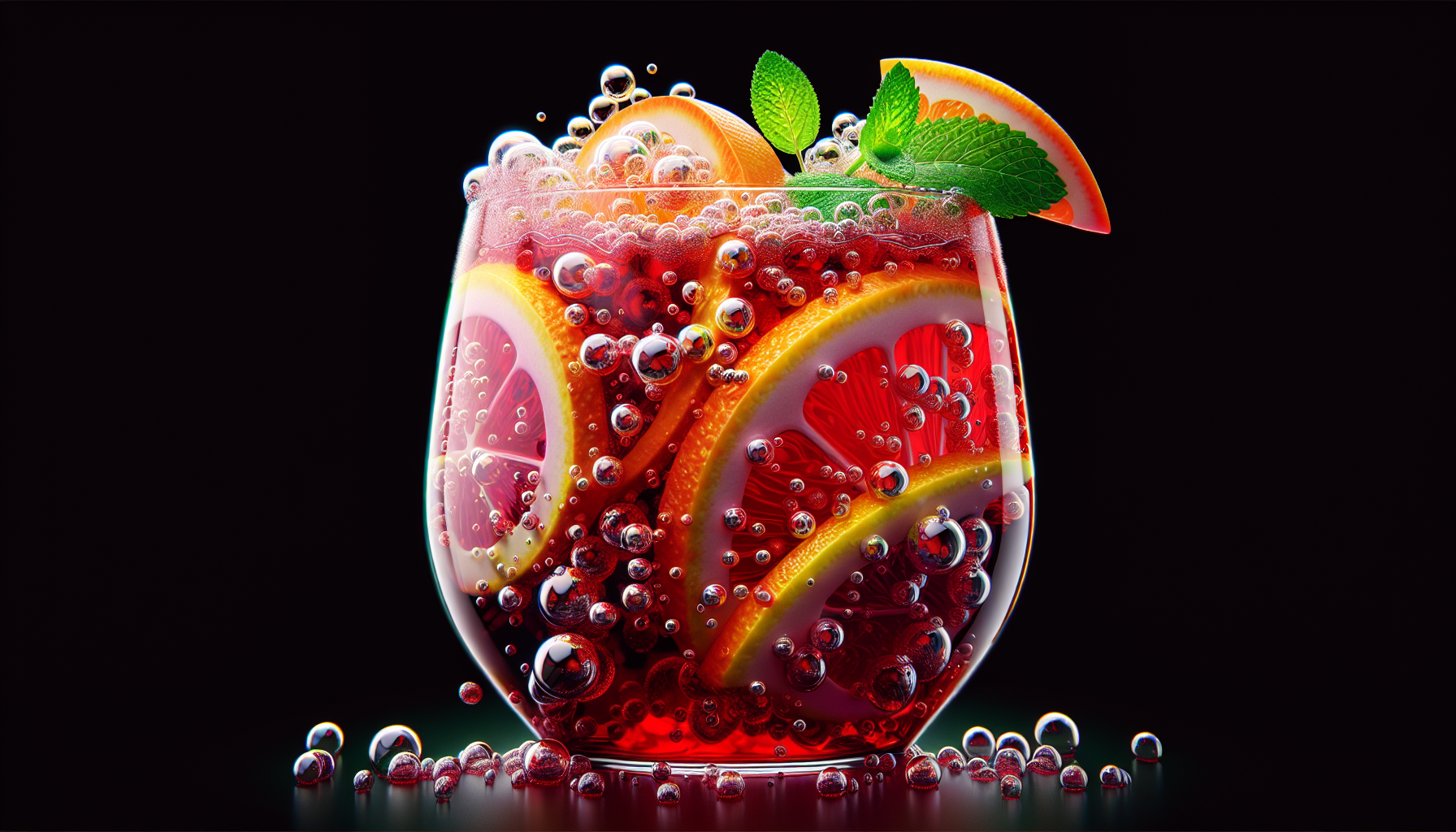
Now, it’s time to discuss the effervescence that lends sangria its vibrant character. Adding fizz to your sangria isn’t just about the bubbles—it’s about enhancing the drink’s refreshing quality without overwhelming the other flavors. Club soda or sparkling water are the go-to choices for introducing that sought-after fizz just before serving. By adding these carbonated elements last, you ensure that the sangria remains vibrant and fizzy right up until it hits the glass.
But why stop at the traditional? If you’re feeling adventurous, try a splash of lemon-lime soda for a sweet citrus kick or ginger ale for a spicy twist. These flavored sodas can add a whole new dimension to your fizzy sangria, creating a taste sensation that’s as unique as it is delicious.
And for those who prefer to customize their fizz level, providing sparkling water alongside your sangria allows each guest to tailor the drink to their liking.
Serving Suggestions: Presenting Your Sangria Masterpiece
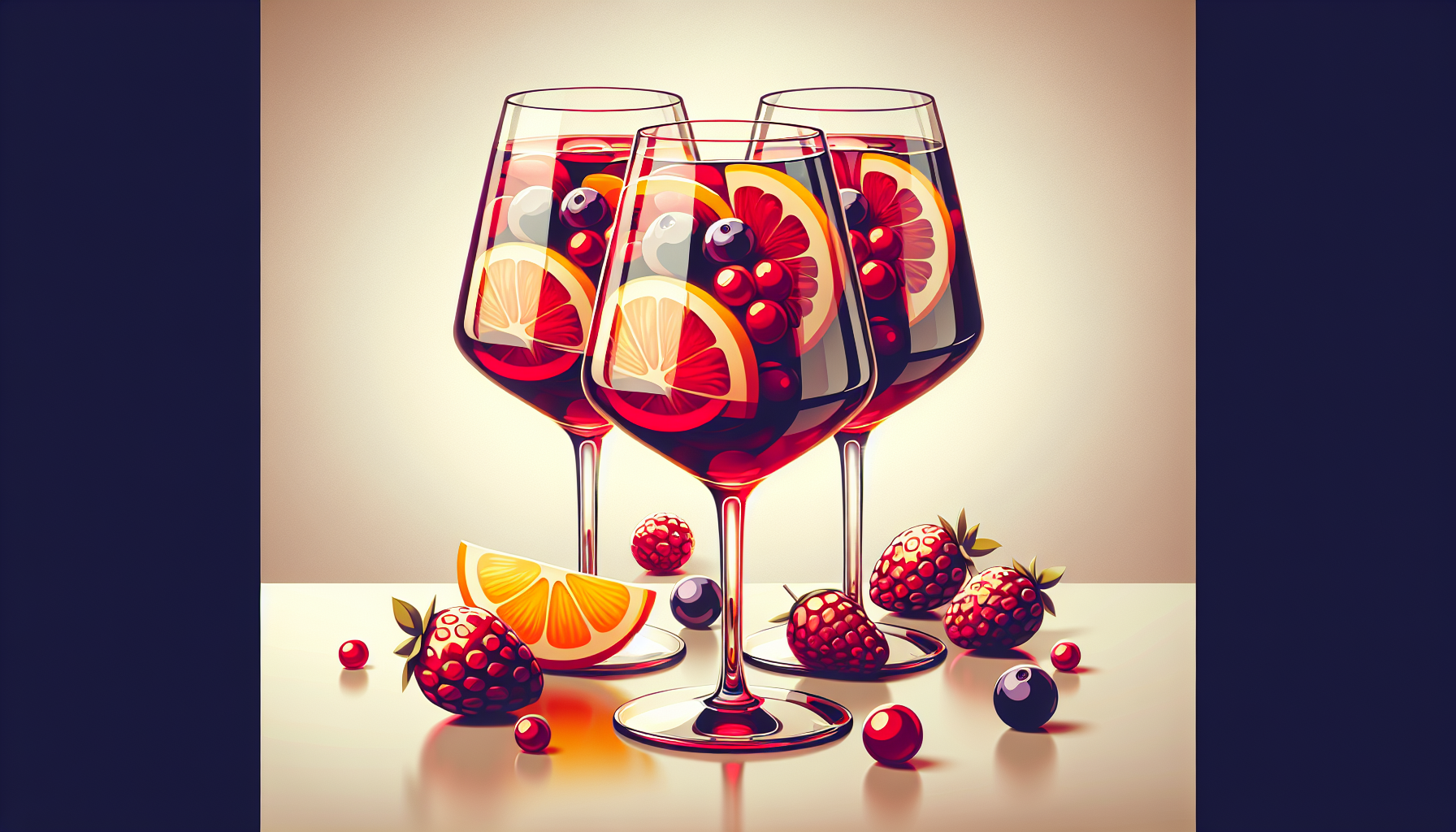
Serving your sangria is all about presentation. The right glassware not only showcases the beautiful colors and textures of your creation but also enhances the overall drinking experience. Opt for clear or partially clear glasses, like large tumblers or classic wine goblets, to accommodate the colorful ice and fruit in your sangria. And for those sweltering summer parties, make sure to serve your red sangria well-chilled with an abundance of ice to keep the drink as cool as the vibe.
Don’t forget the finishing touches—a selection of fresh fruit garnishes can turn a simple glass of sangria into a work of art. Encourage guests to customize their drink with their favorite fruits, creating a personalized touch that makes each glass feel special. Whether it’s a slice of orange perched on the rim or a skewer of berries bobbing amongst the ice, these little details are what elevate your sangria from a mere beverage to a memorable experience.
From Pitcher to Glass: Pouring Techniques
Transferring the sangria from pitcher to glass marks the finale of its creation journey, requiring a dash of finesse. A pitcher with a wide spout prevents clogging and ensures a smooth, uninterrupted flow, while a curved lip can help control the pour and keep the fruit from tumbling out too quickly. When you pour, do so slowly and at a slight angle to ensure an even distribution of fruit in each glass, making every serving as visually appealing as it is tasty
Before you begin pouring, give the pitcher a gentle shake. This mixes the fruit without over-mashing it, maintaining the integrity of the pieces for a more enjoyable texture. If you find the fruit reluctant to leave the pitcher, a bar spoon or a ladle can come in handy, helping to serve the fruit efficiently alongside the sangria. And should there be any fruit left after all the sangria has been poured, use it as a garnish or save it for your next batch.
Remixing the Classic: Red Sangria Variations
Despite the timelessness of the classic red sangria recipe, the world of sangria still offers ample opportunities for innovation. For an authentic Spanish experience, select a Garnacha wine that’s enjoyable on its own and priced under $20—this ensures your sangria has quality at its base. But why not explore further? Here are some ideas to add a unique twist and depth to your sangria:
- Introduce different liqueurs like Grand Marnier or blackberry brandy
- Experiment with different fruits such as peaches, strawberries, or pineapple
- Add herbs like mint or basil for a refreshing twist
- Try using a sparkling wine instead of still wine for a bubbly sangria experience
These additions can add complexity and enhance the flavors of your sangria. So go ahead and get creative with your sangria recipes!
One exquisite variation of sangria combines the following ingredients:
- Dry red wine
- Brandy
- Triple sec
- Frozen lemonade concentrate
- Orange juice
- Lemon juice
Add in slices of lemon, orange, lime, and a few maraschino cherries, and you’ve got a sangria that’s as visually stunning as it is delicious. High-quality ingredients like E & J Brandy VSOP and top-notch triple sec can amplify the orange flavor and elevate your sangria to new heights of enjoyment.
Seasonal Twists: Holiday and Seasonal Recipes
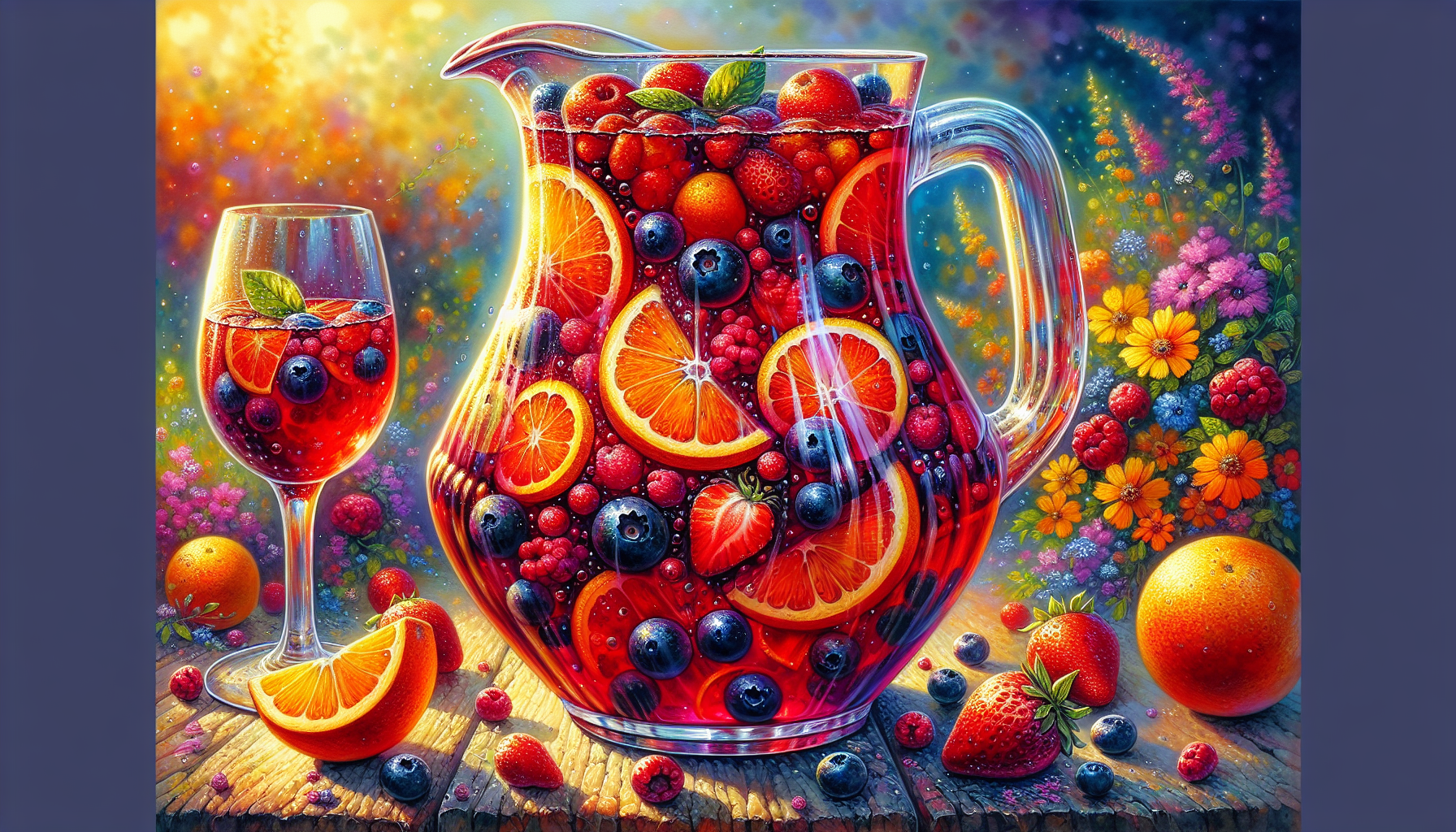
As the chameleon of the cocktail world, Sangria seamlessly adapts to any season. For summer entertaining, incorporating seasonal fruits like fresh strawberries or sliced peaches can add a refreshing touch that’s perfect for balmy weather. On the other hand, during the holiday season or cooler months, apples and pears can lend a comforting, festive flavor that warms the soul.
These seasonal twists not only make your sangria recipes more exciting but also allow you to celebrate the bounty of each season. Imagine the delight of your guests as they sip on a sangria that perfectly captures the essence of summer or the cozy charm of winter. With a little creativity and some seasonal flair, your sangria can become the highlight of any celebration, no matter the time of year.
Pairing Sangria with Food: The Ultimate Guide
Sangria’s versatility goes beyond its ingredients, extending into the domain of food pairing. A robust red sangria harmonizes beautifully with the bold flavors of rich meat dishes like empanadas, grilled steak, or chorizo. The intricate layers of flavor in the sangria complement the savory and sweet notes of these dishes, creating a dining experience that’s both satisfying and indulgent.
For something more casual, a well-curated charcuterie board with a variety of cheeses and cured meats can be the perfect accompaniment to sangria. The contrast between the rich, fatty flavors of the board and the fruity, refreshing notes of the sangria is truly a match made in culinary heaven.
And for dessert, why not pair your sangria with chocolate or berry-laden sweets? The combination of sweet and fruity enhances the sangria’s profile, making each bite and sip a celebration of flavors.
Summary
As our journey through the vibrant world of red sangria comes to a close, we reflect on the joy of crafting the perfect blend, the techniques that make it sparkle, and the art of presenting it with style. From selecting the ideal wine base to adding a personal twist with seasonal fruits and liqueurs, we’ve explored how to make sangria an unforgettable part of any gathering. Remember, the best sangria recipe is the one that brings smiles to your guests’ faces, and with these tips and tricks, you’re well-equipped to create a sangria experience that’s as unique as you are. So raise your glass, toast to the good times, and let the flavors of sangria turn any moment into a celebration.
Frequently Asked Questions
What's the best type of red wine to use for a classic red sangria recipe?
The best type of red wine to use for a classic red sangria recipe is a fruity, dry, and low-tannin Spanish wine like Garnacha or Tempranillo, or other varieties such as Rioja or Cabernet Sauvignon can also work well. Just make sure to choose a flavorful yet affordable wine.
How much fruit should I add to my red sangria?
You should add fruit in moderation to your red sangria to avoid overpowering the wine's character. Use seasonal fruits for a fresh flavor and ensure that the flavors of the wine and fruit complement each other.
Can I make my sangria sweeter without using simple syrup?
Yes, you can make your sangria sweeter without using simple syrup by using alternatives like honey, maple syrup, or brown sugar to adjust the sweetness to your liking. Try different sweeteners to find the flavor you prefer.
What does ShopWineDirect.com carry?
At ShopWineDirect.com, we have many options for you. Browse through the pages of endless possibilities and have all your favorites shipped right to your door. With a wide array of wine, beer, and spirits, you're bound to find exactly what you're looking for.
Should I serve sangria immediately after mixing, or is it better to wait?
It's better to wait after mixing sangria to let the flavors meld and develop fully. For the best taste, refrigerate it for about 8 hours or overnight before serving for a richer and more robust flavor.
What are some good food pairings with red sangria?
Your red sangria will go perfectly with rich meat dishes like empanadas or grilled steak, as well as a diverse selection of cheeses and cured meats from a charcuterie board. For dessert, consider pairing it with chocolate or berry-based sweets to bring out its fruity and sweet notes.

